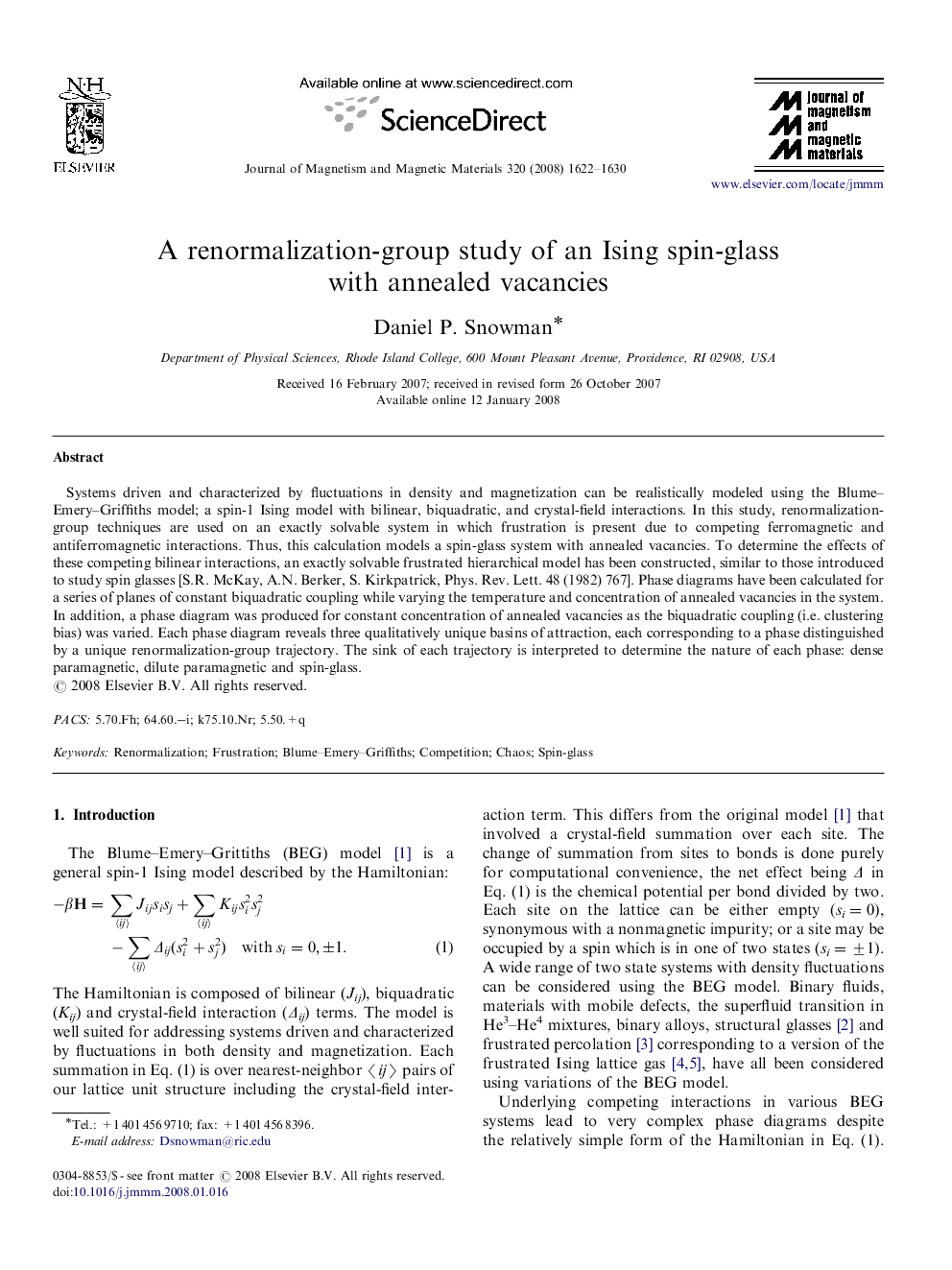| Article ID | Journal | Published Year | Pages | File Type |
|---|---|---|---|---|
| 1803954 | Journal of Magnetism and Magnetic Materials | 2008 | 9 Pages |
Abstract
Systems driven and characterized by fluctuations in density and magnetization can be realistically modeled using the Blume-Emery-Griffiths model; a spin-1 Ising model with bilinear, biquadratic, and crystal-field interactions. In this study, renormalization-group techniques are used on an exactly solvable system in which frustration is present due to competing ferromagnetic and antiferromagnetic interactions. Thus, this calculation models a spin-glass system with annealed vacancies. To determine the effects of these competing bilinear interactions, an exactly solvable frustrated hierarchical model has been constructed, similar to those introduced to study spin glasses [S.R. McKay, A.N. Berker, S. Kirkpatrick, Phys. Rev. Lett. 48 (1982) 767]. Phase diagrams have been calculated for a series of planes of constant biquadratic coupling while varying the temperature and concentration of annealed vacancies in the system. In addition, a phase diagram was produced for constant concentration of annealed vacancies as the biquadratic coupling (i.e. clustering bias) was varied. Each phase diagram reveals three qualitatively unique basins of attraction, each corresponding to a phase distinguished by a unique renormalization-group trajectory. The sink of each trajectory is interpreted to determine the nature of each phase: dense paramagnetic, dilute paramagnetic and spin-glass.
Keywords
Related Topics
Physical Sciences and Engineering
Physics and Astronomy
Condensed Matter Physics
Authors
Daniel P. Snowman,
